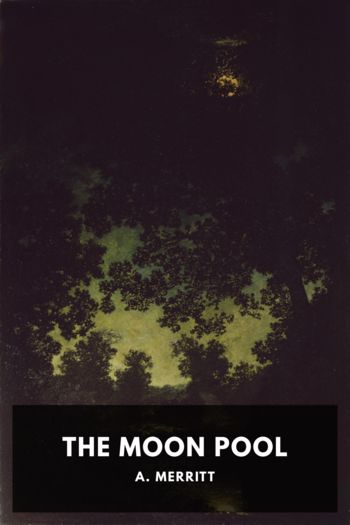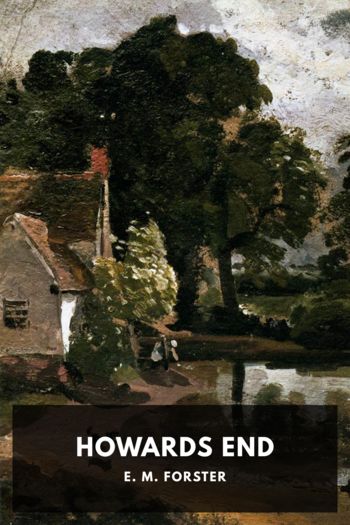How to Become a Witch, Amber K. [new books to read .txt] 📗

- Author: Amber K.
Book online «How to Become a Witch, Amber K. [new books to read .txt] 📗». Author Amber K.
Core Activity: In a sabbat or celebratory ritual, this might involve dancing the maypole, singing songs, or playing a game. A transformative ritual will require raising power and directing it to a goal. To raise power, you can sing, chant, dance, clap, or drum until you feel the energy rise. When the power reaches its peak (you will feel it surging around and within you), direct it to the goal. You can raise your arms and let it flow through you to an image you visualize, or you can cup your hands around a talisman and let the energy flow into it. After the power ebbs, ground any extra energy by touching the earth, while any remaining power flows back to the Mother.
Cakes and Wine: The sharing of food and beverage enables us to give thanks for the earth’s gifts and begin transitioning back to the usual world. Eating also helps you ground.
Farewells to Deities and Quarters: Thank whatever deities were invited and release them. You may say something like, “Thank you, ______, for your presence and power in this ritual. May your wisdom, love, and power stay with me. Stay if you will, go if you must, and if you must go, I bid you hail and farewell!”
Then release the quarters similarly, thanking them for their presence in your ritual and bidding them “hail and farewell” as you imagine them retreating from the edge of your circle into the distance where they came from.
Opening the Circle: The energy sphere is taken down, and the area returns to normal space and time. Walk widdershins (counterclockwise) around the circle, pointing your athame at the ring of blue fire. Imagine it being pulled back into your athame as you walk. For a traditional closing, say: “The circle is open but never broken. Merry meet, and merry part, and merry meet again!”
Acting in Accord: Follow up any magickal working by taking practical action in support (like sending out résumés for a new job, installing those deadbolts for a more secure house, etc.). You may also repeat the ritual later to reinforce the magick.
Writing Rituals
And a Word about Coyote
We believe in the value of writing your own rituals rather than trying to memorize and perform “canned” rituals written by someone else. Your and your life are unique, and no one else can fully understand your circumstances when writing rituals in a book. A book ritual can be an excellent place to start and a source of really witchy wording, but do personalize it. (A sample self-dedication ritual is included in the appendices. We do not expect you to say it word for word, just use it as a starting point. It can also serve as a template for other rituals.)
In your Book of Shadows, write out your rituals as you envision them—and be ready for the Goddess and the Old Gods to stick their fingers in and stir things up. No ritual ever goes exactly as written if the energy is alive and moving.
Sometimes, things can get really out of whack; the Trickster has appeared. He is called Old Man Coyote in the Southwest. To acknowledge this trickster energy, we usually place a small coyote on the altar—either a tiny statue of an actual coyote or anything funny (Wile E. Coyote and Snoopy come to mind). Thus we honor the trickster energy, which otherwise may manifest in spectacularly disruptive ways. Ignore the Trickster at your peril.
A Sample Ritual for Samhain
Every ritual is unique; even if the same outline is used, different participants and lunar and seasonal energies will guarantee that one ritual cannot duplicate another. Differing traditions, goals, and styles make the range of variation even more enormous, so it’s difficult to present anything like a typical ritual. Nonetheless, here is one just to give you a glimpse.
October 31, Samhain. Outside, children have wandered the neighborhood in costume, being deliciously scared and gathering great bags of Halloween candy. But the hour grows late, the streets are dark and deserted, and now an ancient holy day will be celebrated.
“Why do they schedule Halloween on the same night as Samhain?” grumbles Oak Shadow, the high priest of Twilight Coven. “Did someone turn off the porch light?”
“Done,” says Velvet, the coven maiden. “And the altar is ready. Where’s Summerlight?”
“Here.” The high priestess seems to flow into the room, her black robe swirling. “Gather the clan, please.”
When all eight members are gathered, Summerlight invites them to place mementos of their beloved dead on the altar, and each comes forward to place a framed photo, piece of jewelry, or once-treasured possession between the black candles.
“We have prepared ourselves for this night with fasting and meditation,” says Oak Shadow. “Let us begin. Velvet, will you lead us in an attunement?”
Soon, all are holding hands and chanting: “Hecate, Ceridwen, Dark Mother, take us in…” Afterward, all but Summerlight and Oak Shadow step into the next room.
At the altar, Summerlight murmurs quiet words over a dish of salt and a bowl of water, then combines them. Then she moves slowly around the room, flicking saltwater to purify the space. Oak Shadow follows her, the coven sword in his large hands. In his deep voice he intones, “I conjure thee, O circle of power…” and continues until the circle is cast. Then he cuts open a portal, and he and his high priestess move to flank the invisible entrance into the circle of energy.
Now the coveners enter one by one; they are purified with the smoke of incense, then welcomed, kissed, and spun to the left of the gateway, according to the old custom. When all have been “spun into the circle,” Oak Shadow closes the gate with the sword.
Now the coven moves in unison, facing east, then south, then west, then north; at each direction, they salute with their athames and then simultaneously draw the appropriate element-invoking pentagram. At





Comments (0)